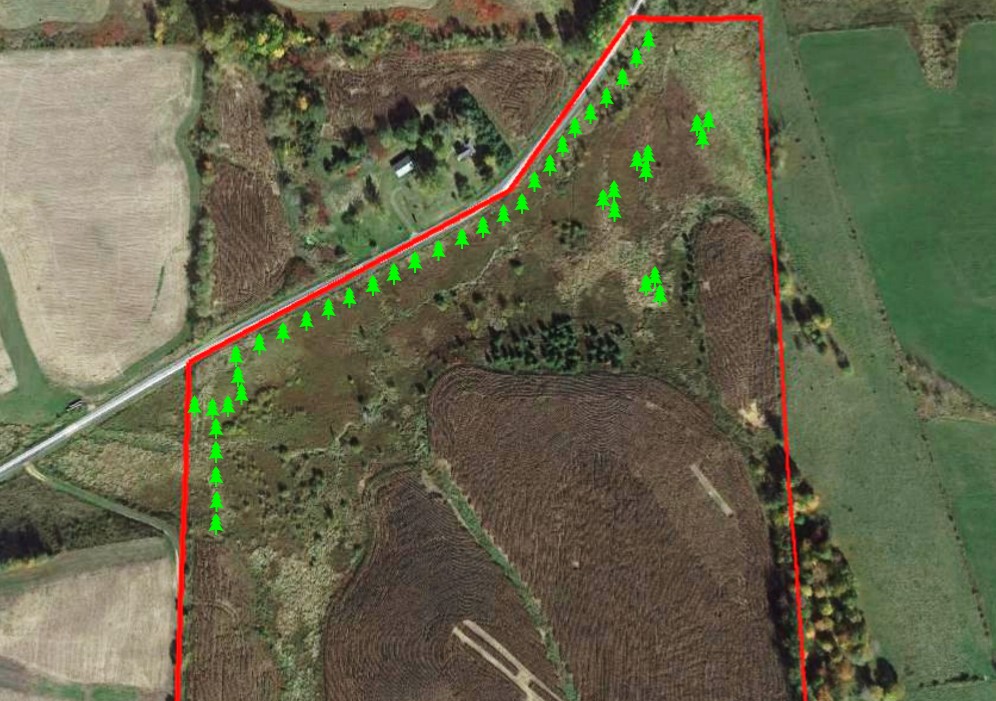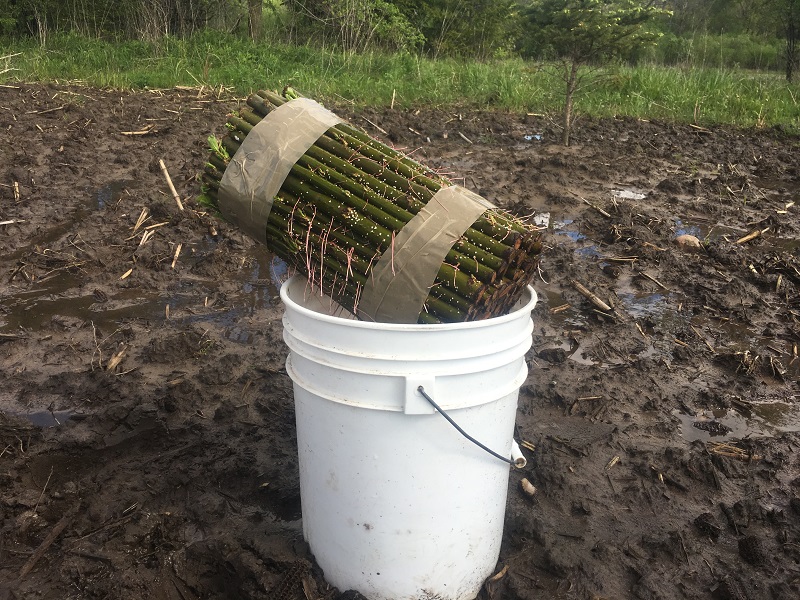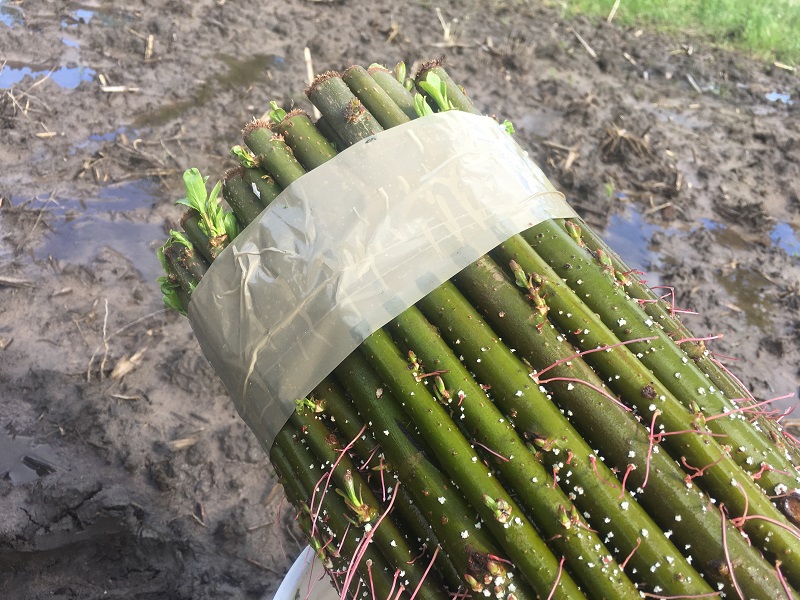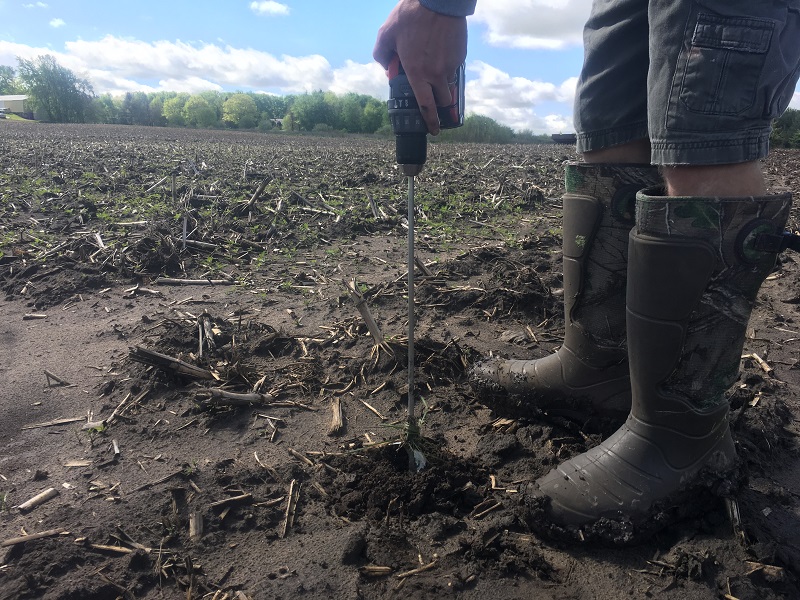Do you have an open area on your hunting property you wish you could screen off in order to get to or from your stand without bumping deer? Or maybe you’ve got a crop field or food plot you wish you could block from the road or section off from a larger field. Or perhaps you just want to break up a monotonous landscape to make it hunt bigger. If any of these thoughts have crossed your mind, chances are you googled something like ‘screen trees for hunting property’ or ‘best tree/shrub/plant to create a screen’ or ‘fast growing screen trees’.
That last one is especially relevant because in today’s world, we want everything NOW!
Well . . . not gonna lie, we are in the same boat for our hunting property. We have a low-lying swamp just off the road, which sits a good 4 feet higher than the swamp, so spotting deer from a vehicle is a breeze. Also, the swamp is not your typical cattail and dogwood type swamp, it’s mostly medium height grasses with a few willow clumps scattered throughout – so you can see deer when they are up and walking. During hunting season, we’d constantly see vehicles slowing and stopping to observe deer from the quiet country road, eventually they’d run off and seek better cover – obviously, this wasn’t a positive thing. Not to mention, the increased possibility of poaching, especially with us being absentee landowners. Thus, I began my search for a fast-growing screening tree or shrub that was water tolerant (because we’d have to plant them along the edge of the swamp).
A general planting map showing our line of trees to obstruct view into the swamp. The separate clumps are to break up the openness and hopefully act as buck bedding areas.
I started to research screen tree varieties and species online. I came across several sites that offered what I was looking for, but ultimately the price was more than we were willing to pay. Keep in mind, we were looking to screen off approximately 425 yards of road frontage, which with one tree every five feet (1 tree/5 ft.) we needed approximately 300 trees to create a thick enough screen to create a visual barrier into the swamp – multiply that by $6-$10 per tree and it adds up really quick. Nonetheless, most of these sites were offering similar varieties of trees, so I had a good starting point. Now it was time to search deeper into the interwebs to find a tree farm or nursery with an affordable price.
If you’re after a fast-growing screen tree, you’ll likely have two options to choose from – a hybrid poplar or a hybrid willow of some sort. Long story short, we finally stumbled across Kelly Tree Farms, based out of Clarence, Iowa and they offered the details, photographs, pricing, and fast growing screen trees we were looking for. We opted for 300 of what they call the Austree Hybrid Willow. At a $1 per tree (or cutting) it seemed reasonable.
Before showing you pictures of our plantings, I wanted to mention that we intend to plant another row of these Austree willows staggered behind the first row using clippings from this year’s willows (free). Also, we plan on planting some type or variety of coniferous trees (likely spruce) behind the willows to provide a long-term, year-round screen for the deer in the swamp.
We will be updating this blog throughout the year to track the progress of the living and supposedly fast growing whitetail screen. But first, here are a few things I learned along the way when trying to purchase the perfect screen tree for deer online.
- It’s hard to find a website with good images of what the screen tree will look like down the road (we plan on changing that with this blog). Kelly Tree farms showed nice examples as well.
- There’s no “perfect” screen tree out there.
- Don’t expect a screen the very first year.
- Think about future plantings and a more permanent screen.
- Get creative. Along with planting the line of screen trees we planted several clumps of seven willows to break up the openness and create more preferred bedding areas.


The hybrid willow screen trees came packaged in bundles of 100 cuttings. After a week of soaking in a bucket of water, roots were nearly two inches long and buds were sprouting from the tops.
We used an auger planting bit ($10 from hardware store) to drill the pilot holes for the cuttings. One thing to note, site preparation is key and they recommend a weed/grass free planting environment. A healthy dose of RoundUp (glyphosate) should take care of any competing vegetation.

Planting instructions said to leave 2-5” of the top unburied. Fill in around the roots to provide good soil contact.
Just a stick in the mud… hopefully it’s a couple feet tall the next time we see it. And that’s it, with four guys we had 300 trees planted in 3 hours.
Check back often as we will be updating the blog monthly with progress photos.
 June 9th update. Growth after 2 weeks.
June 9th update. Growth after 2 weeks.
July 20th update. About 3 feet tall.
 July 20th update. Multiple stems about 3 feet tall.March 21, 2018 update: They survived the first WI winter and starting to bud. Most of them have multiple stems and stand about 4 feet tall. We planted the hybrid willows on the outer edge of the screen to create a fast and more immediate screen, while the spruce trees grow up and create an evergreen screen for the future. Tallest tree is about 6 feet tall.
July 20th update. Multiple stems about 3 feet tall.March 21, 2018 update: They survived the first WI winter and starting to bud. Most of them have multiple stems and stand about 4 feet tall. We planted the hybrid willows on the outer edge of the screen to create a fast and more immediate screen, while the spruce trees grow up and create an evergreen screen for the future. Tallest tree is about 6 feet tall.
NEXT UPDATE WILL BE IN MAY AFTER LEAFE OUT.











































